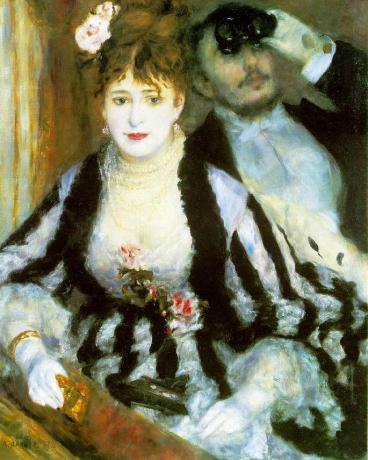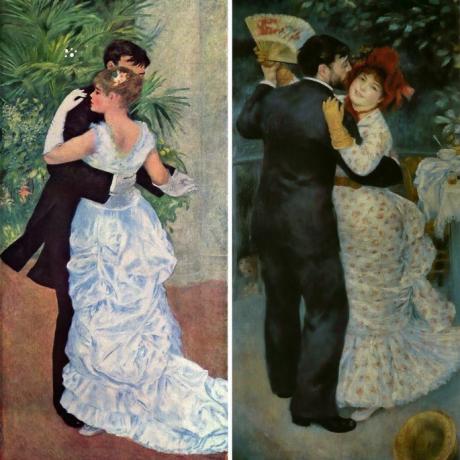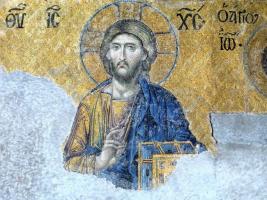Renoir: the 10 most important works of the impressionist painter
Pierre-August Renoir is one of the most important representatives of French Impressionism, a 19th century movement that revolutionized the pictorial tradition. Renoir stood out for the study of light effects, the sensuality of the line and the creation of vaporous atmospheres through the interplay between lights and textures.
His themes revolved around the joyous and festive life of the bourgeoisie, and he also expressed a prominent interest in the nude and nature. These characteristics, which gave it a unique and unrepeatable line of singular beauty, have made it one of the most recognized references in the history of Western art. Next, let's get to know some of his most important works.
1. The rowers' lunch

The rowers' lunch It may be Renoir's most famous work, and one of the most recognized of Impressionism and art history, to the point of being part of the story line of the film
Amelie poulin. The painting represents a feast on the terrace of a restaurant called Maison Fouirnase, located on the banks of the River Seine. The scene gives an excuse to include a splendid still life at the table. Most of the characters are identified. These are:
- Aline Charigot (with a puppy), who would later become Renoir's wife;
- Alphonse Fournaise, son of the Fournaise, owners of the restaurant;
- Alphonsine Fournaise, Alphonse's sister;
- Baron Raoul Barbier, former mayor;
- Jules Laforgue: critic, poet and secretary of Ephrussi;
- Charles Ephrussi: banker and editor of the Gazette des Beaux-Arts;
- Ellen Andrée, model of several impressionist painters;
- To identify;
- Angèle Legault, actress;
- Adrien Maggiolo, Italian journalist;
- Gustave Caillebotte, painter and patron;
- Pierren Lestinguez, Renoir's friend;
- Paul Lhote, a friend of Renoir;
- Jeanne Samary, actress.
From a pictorial point of view, The rowers' lunch is a magnificent expression of the impressionist program, touched by the particularity of the individual style of Renoir: highlights the masterful use of light, color, textures and the vaporous atmosphere that surrounds it everything.
2. Dancing at the Moulin de la Galette

Dancing at the Moulin de la Galett it represents a dance scene in a popular place on the boulevard Montmartre that bore that name. In this canvas, Renoir makes an exquisite treatment of light, showing how it divides as it passes through the foliage of the trees. The spots of light look like cotton balls on the depicted objects.
As that place was also a picnic area, the scene includes a still life or still life. Renoir achieves the goal of studying the way in which light and color work and, at the same time, portrays the daily customs of the merry 19th century bourgeoisie.
3. Two girls at the piano

This work was an official commission from the French State, and has several versions, including other techniques such as pastel. The work represents two young people, one sitting at the piano and the other standing reading the score. Renoir shines with the sensual line and the treatment of the vaporous textures, which help to immerse himself in the scene. Yellow tones dominate the canvas, giving the atmosphere a golden air and a touch of refinement.
4. La Grenouillère

In this piece, Renoir does a wonderful job of treating the light reflections on the water, which capture our attention. The leaves of the tree under which the characters are found seem to come to life before our eyes. The scene represents the small artificial island with a single tree planted in the center. The small island is joined to the island of la Grenouillère by a wooden path, similar to a bridge. In the Grenouillère you will find the restaurant and the boat rental service.

This work was produced alongside Monet, who made his own version of it. Therefore, these are exploratory works on the effects of light, typical of impressionism. Both pieces demonstrate the understanding that these painters had about light phenomena, such as the reflection and refraction of light.
See also:
- Claude Monet: Most Important Works
- Impressionism
5. The swing

On The swing, Renoir once again marvels us with the light that penetrates the leaves of the trees and falls on objects as areas of differentiated illumination. It seems to portray an almost photographic moment in a conversation that involves three adult characters and a girl who watches, waiting for her turn on the swing. In the background, four blurred characters make their appearance. This makes us see that we are in the presence of a social event.
6. Naked in the sun

On Naked in the sun or Naked with the effect of the sun, Renoir studies the behavior of sunlight on the female body. He does not use the traditional chiaroscuro technique. Therefore, it does not use black as a shadow. For the Impressionists, the shadow was another type of color. For this reason, instead of black, Renoir opted for violet tones to create the effect of shadows.
The elements around the woman are not important, since it is a study. The painter has focused strictly on light and the female body. You can see the use of a painting technique based on spots and thick brushstrokes, as well as color effects by superimposing tones directly on the canvas.
7. The box

The Impressionists were also interested in the cultural and nightlife of the city. In this scene, Renoir portrays two bourgeois who go to the opera, and from the balcony flaunt their social status. The young woman pictured is his friend and his model Nini Gueule de Raie. With it, the painter's brother, Edmond Renoir, is recognized, exhibiting an attitude of disinterest with respect to the "spectator." With their binoculars, they make a gesture of looking for familiar people in the middle of the public (whom we do not see in the scene).
The canvas stands out because Renoir defies the very rules of impressionism by including black as a color, both in the woman's dress and in the man's suit and hat. For this daring, this canvas contrasts with the painting Naked in the sun.
8. Bathers

This canvas of Bathers It is from a very advanced time of the painter and, in fact, it was finished in the same year of his death. He leaves the contemporary world behind to return to outdoor nudes, a recurring theme in Pierre-August Renoir.
On this occasion, we see two naked women on the grass, while three bathers are seen in the background. The color stands out in the scene. The influence of the Baroque of Pedro Pablo Rubens can be seen in the treatment of volumes, colors and textures.
9. The umbrellas

On The umbrellas We see the moment when the rain begins in the city. Only a woman and two girls in the foreground are without an umbrella. In the faces of the characters we can see the typical treatment of Renoir, vaporous.
However, the umbrellas and suits draw attention for the use of clear contours and well-defined volumes that announce a more post-impressionist look, close to the style of Cézanne.
See also Postimpressionism
10. Dance in the city / Dance in the field

Dance in the city Y Dance in the field they form a whole in natural size. The city scene shows what must have been a waltz dance, the only dance in which couples were allowed to dance so closely. He wants to convey the elegance and refinement typical of Parisian life in particular, applying clearer and more defined contours.
For its part, Dance in the field shows a slightly more relaxed look, with a small still life in the background and blurred contours and textures. With these works, Renoir shows the differences in entertainment practices between rural and urban environments.
It may interest you:
- Edgar Degas: essential works
- Movie Amelie Poulin



